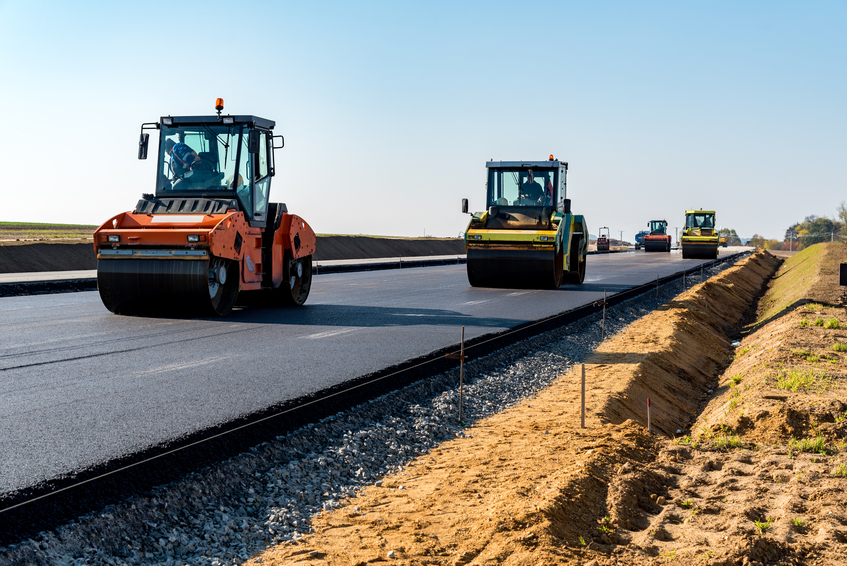Pavement Design 15 PDH Discount Package 2
Courses in this Package
An Introduction to Concrete Pavements (C06-009)
An Introduction to Pavement Design in Seasonal Frost Conditions (C04-029)
An Introduction to Railroad Trackage (C02-047)
An Introduction to Soil Stabilization for Pavements (C03-028)

This online engineering PDH course provides information on the materials and construction procedures for portland cement concrete pavements. It describes the constituents to be used in concrete, the procedures to be used in manufacturing concrete, and the equipment and procedures to place, texture, and cure concrete for pavements. It is applicable to pavements for streets and roads, vehicle parking areas, and airfields.
This 6 PDH online course is intended for civil and structural engineers and other design and construction professionals seeking an introduction to the technologies, equipment and construction practices for portland cement concrete vehicular and airfield pavements.
This PE continuing education course is intended to provide you with the following specific knowledge and skills:
- Learning about responsibilities for mixture proportioning
- Learning how to prepare and test concrete samples for flexural strength
- Learning about the relationship between water-cement ratio and strength of concrete
- Learning how to determine the field control strength for concrete
- Understanding the importance of air entrainment in concrete
- Learning about the five principal types of concrete produced in the United States
- Learning about grading of coarse and fine aggregate
- Learning about deleterious materials in aggregate and why they must be controlled
- Learning about admixtures and how and when they are employed
- Learning about manufacturing, delivering and placing concrete
In this professional engineering CEU course, you need to review the course document titled, "An Introduction to Concrete Pavements".
Upon successful completion of the quiz, print your Certificate of Completion instantly. (Note: if you are paying by check or money order, you will be able to print it after we receive your payment.) For your convenience, we will also email it to you. Please note that you can log in to your account at any time to access and print your Certificate of Completion.

This online engineering PDH course provides introductory information about evaluation of soil conditions, selection of materials, and design methods for pavements in seasonal frost conditions. It presents criteria and procedures for the design and construction of pavements placed on subgrade or base course materials subject to seasonal frost action. The most prevalent modes of distress in pavements and their causes are listed.
The detrimental effects of frost action in subsurface materials are manifested by non-uniform heave of pavements during the winter and by loss of strength of affected soils during the ensuing thaw period. This is accompanied by a corresponding increase in damage accumulation and a more rapid rate of pavement deterioration during the period of weakening; other related detrimental effects of frost and low temperatures are possible loss of compaction, development of permanent roughness, restriction of drainage by the frozen strata, and cracking and deterioration of the pavement surface. Hazardous operating conditions, excessive maintenance, or pavement destruction may result.
This 4 PDH online course is intended for civil and geotechnical engineers and other design and construction professionals wanting to learn how to design rigid and flexible pavements where seasonal frost conditions exist.
This PE continuing education course is intended to provide you with the following specific knowledge and skills:
- Learning about frost, soil and pavement terminology applicable to seasonal frost design conditions
- Learning about bound bases and how they are employed in frost conditions
- Knowing the definitions of frost-susceptible soils
- Understanding how the design freezing index is determined and applied in design for seasonal frost
- Knowing how to design to accommodate varved clays
- Learning about the alternative methods of thickness design
- Knowing how to determine and apply the air freezing index
- Learning about the reduced subgrade strength design method
In this professional engineering CEU course, you need to review the course document titled, "An Introduction to Pavement Design in Seasonal Frost Conditions".
Upon successful completion of the quiz, print your Certificate of Completion instantly. (Note: if you are paying by check or money order, you will be able to print it after we receive your payment.) For your convenience, we will also email it to you. Please note that you can log in to your account at any time to access and print your Certificate of Completion.

This online engineering PDH course provides an introduction to the design of railroad trackage in the United States. Included are roadways, ballast, ties, rails, track grade, turnouts, crossovers, highway crossings, sidings, warehouse trackage, track scales, and yards.
This 2 PDH online course is intended for engineers and other design and construction professionals seeking an introduction to the standards and practices for the design of running, siding and yard trackage for railroads in the United States.
This PE continuing education course is intended to provide you with the following specific knowledge and skills:
- Understanding the parameters for design of railroad trackage roadways
- Learning about the design and construction of trackage ballast and sub-ballast
- Learning about standardized track and tie configurations and materials
- Learning about the design considerations for running track alignment and grade
- Understanding the approach to design of highway grade crossings
- Learning about siding trackage
- Understanding the parameters for warehouse trackage
- Learning about track scales
In this professional engineering CEU course, you need to review the course document titled, "An Introduction to Railroad Trackage".
Upon successful completion of the quiz, print your Certificate of Completion instantly. (Note: if you are paying by check or money order, you will be able to print it after we receive your payment.) For your convenience, we will also email it to you. Please note that you can log in to your account at any time to access and print your Certificate of Completion.

This online engineering PDH course will introduce you to accepted methods for stabilizing soils underlying new pavements to improve strength and durability. You will also learn about methods to achieve better soil gradation, and reduction of plasticity index or swelling potential. You will learn how it may be possible to reduce the thickness of soil layers by stabilization methods. The course covers stabilizers such as portland cement, lime, lime-fly ash, lime-cement-fly ash, bitumen, lime-cement and lime-asphalt. Stabilizer selection based on soil conditions is discussed, as well as special considerations in frost areas.
This 3 PDH online course is intended for civil engineers and construction professionals seeking an introduction to the materials and methods of soil stabilization for pavements.
This PE continuing education course is intended to provide you with the following specific knowledge and skills:
- Learning how to select additives based on soil types
- Learning how to use stabilized soils in frost areas
- Learning how base and subbase courses may be reduced using soil stabilization
- Learning how to determine stabilizer content
- Learning about portland cement as a stabilizer
- Learning about stabilization with lime
- Learning about stabilization with lime-fly ash and lime-cement-fly ash
- Learning about stabilization with bitumen
- Learning about lime-cement stabilization
- Learning about lime-bitumen stabilization
In this professional engineering CEU course, you need to review the course document titled, "An Introduction to Soil Stabilization for Pavements ".
Upon successful completion of the quiz, print your Certificate of Completion instantly. (Note: if you are paying by check or money order, you will be able to print it after we receive your payment.) For your convenience, we will also email it to you. Please note that you can log in to your account at any time to access and print your Certificate of Completion.